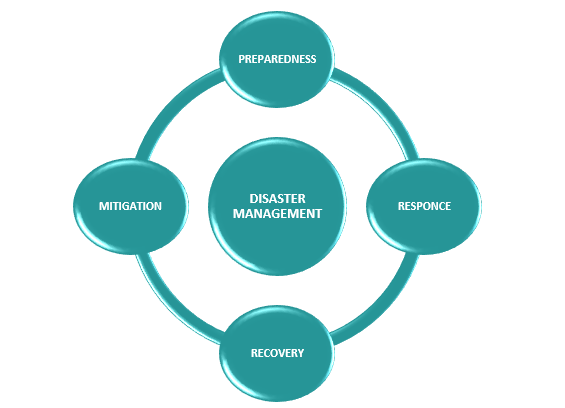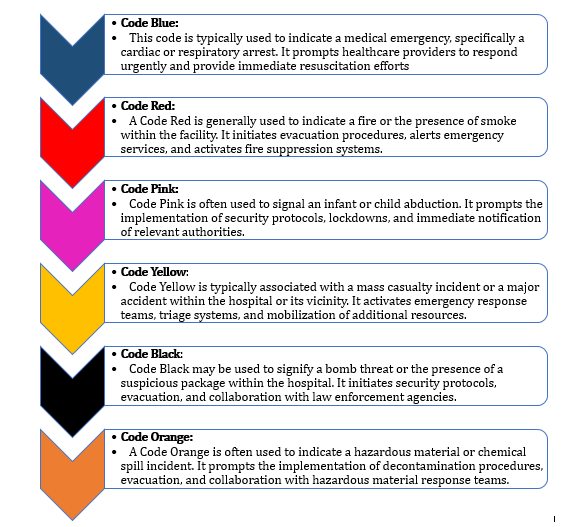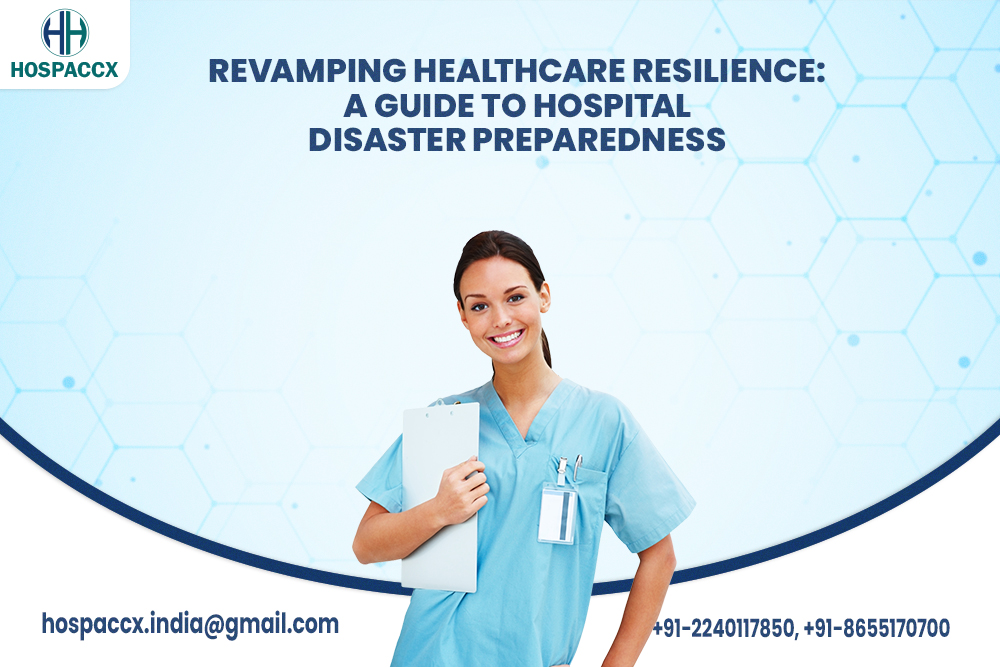Are you looking to find out a detailed guidance on Hospital Disaster Preparedness? In this article Hospaccx Healthcare Consultancy has mapped all on major aspects of Hospital Disaster Preparedness.
INTRODUCTION
Natural catastrophes, pandemics, and other emergencies have increased alarmingly in recent years, placing tremendous strain on healthcare systems around the world. For instance, the COVID-19 pandemic highlighted serious flaws in the healthcare system, highlighting the necessity for hospitals to be well-equipped to handle unanticipated emergencies. For healthcare organizations to respond to emergencies and safeguard the health and well-being of populations, they must build resilience.
Hospital disaster preparedness is a critical aspect of healthcare management, focusing on ensuring that hospitals are ready to respond effectively to emergencies, natural disasters, pandemics, and other crises. It involves strategic planning, resource allocation, staff training, and infrastructure development to minimize the impact of disasters on healthcare services and ensure the safety of patients, staff, and the community.
TYPES OF DISASTERS
Natural disasters: –
Earthquakes, volcanic eruptions, landslides, avalanches; windstorms, tornadoes, hailstorms, floods, droughts, Locusts swarms, Epidemics.
Manmade disasters: –
Conventional, Bio/Chem/Nuclear warfare; Accidents viz vehicular, plane, train, drowning, collapse of the building, explosions, fires, chemicals/poisoning.
STEPS FOR DISASTER PREPAREDNESS

- Risk Assessment and Planning:
- Hospitals must recognize potential dangers and evaluate how exposed they are to them.
- This evaluation looks at the hospital’s location, physical layout, vital systems, and supply chain.
- Hospitals can create thorough emergency response plans that specify the precise procedures to be followed in a variety of circumstances based on the findings.
- Emergency Operations Centre:
- Establishing an Emergency Operations Center (EOC) within the hospital is crucial for effective coordination and communication during a disaster.
- Key decision-makers and stakeholders convene at the EOC, which serves as the central command post, to manage and coordinate response actions.
- To ensure a planned and effective reaction, it makes real-time information transmission, resource allocation, and decision-making possible.
- Staff education and training:
- Hospital employees are at the front lines of disaster response.
- To improve their preparedness and efficiency during emergencies, it is crucial to give them the proper training and knowledge.
- Surge Capacity and Resource Management:
- Hospitals may encounter an unexpected rush of patients in need of medical assistance during a crisis. To increase the hospital’s capacity and take on a bigger patient load, it is essential to have surge capacity plans in place.
- This could entail constructing field hospitals, temporary treatment facilities, or alternate care facilities. To guarantee continuity of treatment, effective resource management is necessary.
- This includes managing staffing, drugs, and medical supplies.
- Communication and Information Management:
- During a crisis, effective communication is essential for spreading information, coordinating response activities, and updating stakeholders.
- Establish reliable communication solutions, such as redundant channels, emergency notification systems, and interoperable technologies, that can resist infrastructure outages.
- Establish mechanisms for information sharing between emergency management authorities, public health organisations, and healthcare providers.
- Continuous Evaluation and Improvement:
- Disaster preparedness is an ongoing process that needs to be evaluated and improved on a regular basis. Hospitals should carry out performance evaluations and post-disaster debriefings to pinpoint their strengths, flaws, and areas for development.
- Updated emergency response plans and training programmes should take into account the lessons acquired from previous incidents. To improve hospital resilience, keep abreast of new technologies, research, and best practises.
DISASTER MANAGEMENT CYCLE

Mitigation:
Mitigation focuses on actions taken to prevent or reduce the severity of a disaster before it occurs. This phase involves identifying potential hazards, assessing vulnerabilities, and implementing measures to minimize their impact.
Preparedness:
Preparedness involves planning, training, and resource allocation to enhance readiness for a potential disaster. During this phase, organizations and communities develop emergency response plans, establish communication systems, conduct drills and exercises, and train personnel in disaster response procedures.
Response:
The response phase occurs during and immediately after a disaster. It involves actions taken to save lives, protect property, and meet the immediate needs of affected individuals.
Recovery:
The recovery phase starts after the immediate threat of the disaster has passed. It involves efforts to restore and rebuild affected communities, infrastructure, and services. Recovery activities include assessing damage, providing medical care, restoring utilities, repairing buildings, supporting affected individuals and businesses, and implementing measures to prevent similar disasters in the future
EMERGENCY CODES
Hospitals often use emergency codes, also known as color codes or alert codes, to communicate specific types of emergencies or situations within the facility. While the specific codes may vary between hospitals, here are some commonly used emergency codes:

CONCLUSION
Revamping healthcare resilience and prioritizing hospital disaster preparedness are essential steps in ensuring the safety and well-being of patients, staff, and communities during emergencies. By following the guidelines and best practices outlined in this guide, hospitals can enhance their ability to effectively respond to disasters and minimize the impact on healthcare services.
By implementing these measures, hospitals can effectively navigate each phase of the disaster management cycle—mitigation, preparedness, response, and recovery. This enables them to protect lives, provide essential medical care, and contribute to the overall resilience of the healthcare system.
Ultimately, revamping healthcare resilience and prioritizing hospital disaster preparedness are investments that safeguard the health and safety of individuals, enhance community well-being, and contribute to a more resilient healthcare system in the face of emergencies.
For in-depth market and financial feasibility studies or any other healthcare-related research needs, please feel free to reach out to us at +91-8655170700 or email us at hospaccx.india@gmail.com . Our team is equipped to provide comprehensive and detailed insights tailored to your specific requirements.

